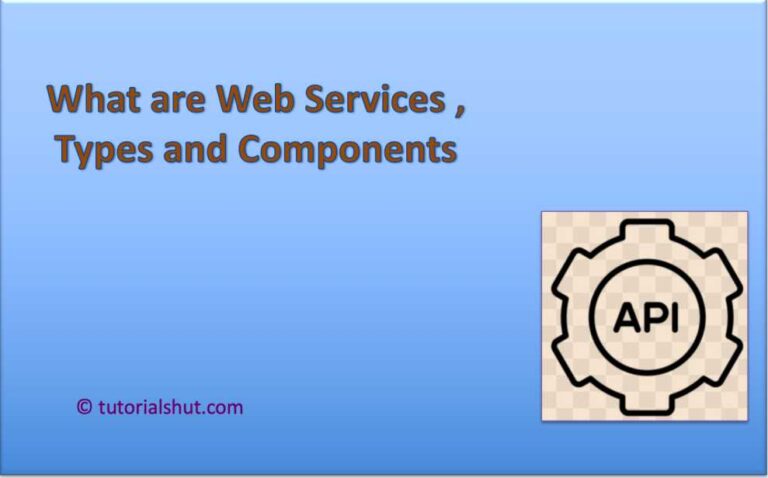API Testing
API Testing Definition
Tools used for API Testing
API Testing types
Benefits of API Testing
Bug & Defects detects by API Testing
Web Service Definition
Types of WebServices
Web Services Components
WebServices Architecture
Difference b/w Web services & API
What is SOAP webService
SOAP Message Structure
What are Web Services , Types and Components
This article will present you with a complete idea about What are Web Services and different types of Web Services.

What are WebServices ?
Web services are client and server applications that communicate over the World Wide Web’s (WWW) HyperText Transfer Protocol (HTTP).
As described by the World Wide Web Consortium (W3C), web services provide a standard means of interoperating between software applications running on a variety of platforms and frameworks.
Web services are characterized by their great interoperability and extensibility, as well as their machine-processable descriptions, thanks to the use of XML. Web services can be combined in a loosely coupled way to achieve complex operations. Programs providing simple services can interact with each other to deliver sophisticated added-value services.
Web services are XML-based information exchange systems that use the Internet for direct application-to-application interaction. These systems can include programs, objects, messages, or documents.
To break that down, a web service comprises these essential functions:
-
- Available over the internet or intranet networks
- Standardized XML messaging system
- Independent of a single operating system or programming language
- Self-describing via standard XML language
Discoverable through a simple location method
Different Types of Web Services?
There are a few central types of web services which are mentioned below
XML-RPC :
(Remote Procedure Call) is the most basic Xml Protocol to exchange data between a wide variety of devices on a network. It uses HTTP to quickly and easily transfer data and communication other information from client to server.
UDDI :
(Universal Description, Discovery, and Integration) is an XML-based standard for detailing, publishing, and discovering web services. It’s basically an internet registry for businesses around the world. The goal is to streamline digital transactions and e-commerce among company systems.
SOAP :
-
- It is an XML-based protocol having the main benefit of implementing the SOAP Web Service as its security. The abbreviation of SOAP is the Simple Object Access Protocol.
- It allows independent processes operating on disparate systems to communicate using XML.
REST:
-
- The REST stands for Representational State Transfer.
- REST is not a set of standards or rules, rather it is a style of software architecture.
- The applications which follow this architecture are referred to as RESTful
- It does not define the standard message exchange format. We can build REST services with both XML and JSON.
- The REST service locates the resource based on the URL and performs the action based on the transport action verb
There are few others well-known web services that use markup languages:
Components of WebServices
The basic web services platform is XML + HTTP. All the standard web services work using the following components −
- SOAP (Simple Object Access Protocol)
- UDDI (Universal Description, Discovery and Integration)
- WSDL (Web Services Description Language)
SOAP (Simple Object Access Protocol):
- SOAP stands for Simple Object Access Protocol.
- SOAP is a XML-based protocol for accessing web services.
- SOAP is a W3C recommendation for communication between applications.
- SOAP is XML based, so it is platform independent and language independent.
- It can be used with Java, .Net or PHP language on any platform.
UDDI :
- UDDI stands for Universal Description, Discovery and Integration
- UDDI is an XML based standard for describing, publishing and finding webservices.
- It can communicate via SOAP.
- It uses WSDL to describe interfaces to webservices.
WSDL :
- WSDL stands for Web Services Description Language.
- WSDL is an XML based language for describing webservices and how to access them.
- It is XML based protocol for information exchange in decentralized and distributed environments.
- It is an integral part of UDDI, an XML based worldwide business registry.
- It allows people and other companies to access the service.
